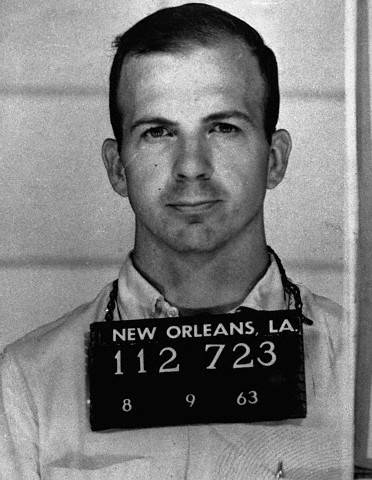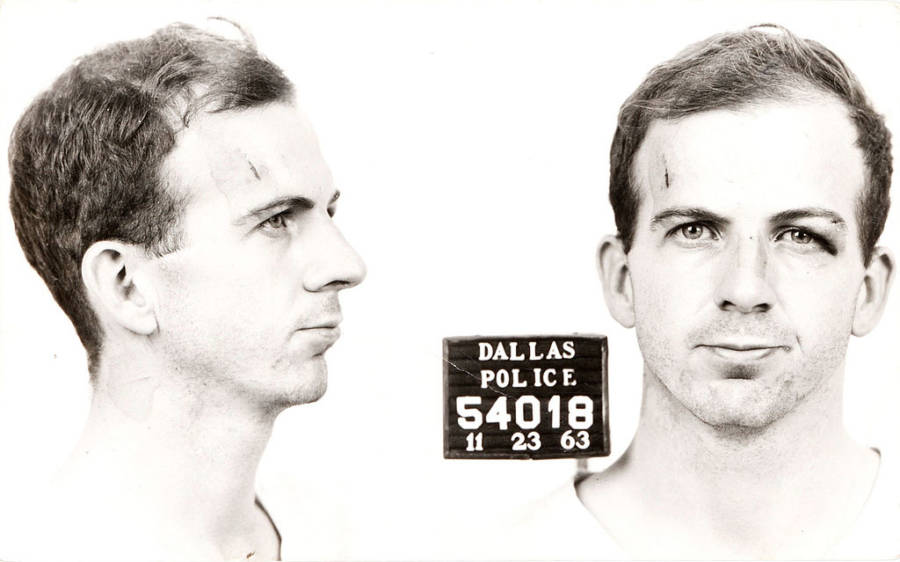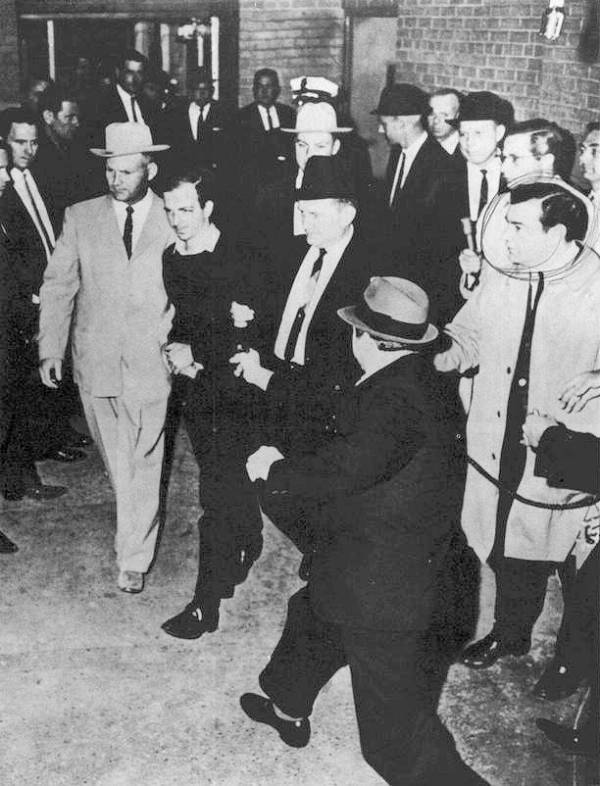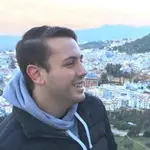Lee Harvey Oswald

The Times-Picayune/Wikimedia Commons
While many of us may not believe that Lee Harvey Oswald actually assassinated President John F. Kennedy, the fact remains that Oswald was arrested for that crime and found to be the assassin by the Warren Commission’s official report.
Whether Oswald did or didn’t kill Kennedy, most of us surely know relatively little about the man behind the murder.
Oswald was born in New Orleans, Louisiana, on October 18, 1939. His father, Robert, died of a heart attack two months before Oswald was born.
Oswald moved around a lot as a child. After leaving Louisiana at the age of five, he and his mother bounced around the Dallas-Fort Worth area throughout his time in elementary school. Despite this, Oswald was a good student, scoring well on reading and math tests.
However, Oswald was also incredibly withdrawn and temperamental. When he was 12 years old, and briefly living in New York City with his mother in his half-brother John’s apartment, he once struck his mother and threatened his half-brother’s wife with a pocket knife.
At the same time, Oswald read voraciously, and first became fascinated with Marxism and communism at the age of 15.
When he turned 17 in 1956, Oswald had his older brother Robert Jr. sign forms as his guardian so that he could join the Marines. Robert Jr. had already served in the Marines, and his younger brother idolized him.

Wikimedia Commons
In the Marines, Oswald was stationed in Japan and the Philippines. There, he obtained good marksmanship scores and was designated a sharpshooter.
However, in the military, Oswald still maintained his streak of bad behavior. He was court-martialed, for example, after he shot himself in the elbow with an unauthorized handgun that he had smuggled onto the base. He then spent a short time in the brig for fighting with a sergeant who he felt was responsible for his first court-martial.
Around this time, Oswald was nicknamed Oswaldskovich by his squad-mates because of his pro-Soviet tirades. He also began to study Russian, a language that he would eventually become fluent in.
Then, in 1959, Oswald made his escape from the military. He received a hardship discharge from active service, claiming that his mother needed care, and was put on reserve.
But rather than going home, Oswald instead devised a path that he could take through Europe and into the Soviet Union. He had already saved up money from his time in the Marines for this daring trek, and traveled from France to the U.K. to Finland, where he received a Soviet visa, and then on to Moscow.
Once he arrived there, Oswald tried to convince puzzled Soviet officials that he wished to renounce his American citizenship and become a citizen of the USSR. To prove his dedication, he independently went to the American consulate in Moscow and publicly attempted to renounce his citizenship.
The Soviets, while concerned about Oswald’s mental health, were convinced, at least for the moment, that he was not a spy. So, Soviet officials set up Oswald with a state-subsidized studio loft and a job at an electronics factory in Minsk.

Wikimedia CommonsOswald poses with his rifle in his backyard in Dallas. March 1963.
Oswald had instead wanted to attend Moscow University, but was not allowed to. This rejection, and his general alienation from Soviet society, left Oswald quickly disillusioned with the USSR. Furthermore, in 1961, he proposed marriage to a Soviet woman who he had been seeing, but was rejected because he was an American.
Then, in March 1961, Oswald met Marina Prusakova, a 19-year-old Soviet pharmacology student, and the two quickly were married and had a child. In 1962, the family of three applied to immigrate to the U.S. It worked, and later that year they were living in Dallas.
In March 1963, Oswald embarked on his first assassination attempt, buying a rifle under an assumed name.
According to his widow in a posthumous report, Oswald plotted to kill retired U.S. Major General Edwin Walker, an outspoken anti-communist and segregationist. Walker was kicked out of the military for distributing far-right propaganda to his troops and was despised by the communist Oswald.
However, Oswald was unsuccessful in his attempt to kill Walker, shooting at him through the window of Walker’s office in his Dallas home but only striking the window frame.
Police were baffled by the attack at the time and only connected Oswald with the attack after the assassination of John F. Kennedy.
After this failed assassination attempt, Oswald began moving around the country with his family, advocating against American intervention in Cuba.
He then returned to Dallas later that year and began working at the Texas School Book Depository. He eventually learned in a local newspaper that President John F. Kennedy’s motorcade would be passing by his place of work during the presidential trip to Dallas.
Then, using the same rifle with which he’d attempted to kill Walker, Oswald began plotting the assassination of Kennedy.
On November 22, 1963, the Warren Commission claims, from his position on the sixth floor of the Texas School Book Depository, Oswald watched the president drive by, and fired three shots, killing President Kennedy and seriously wounding Texas Governor John Connally.

Ira Jefferson “Jack” Beers Jr./The Dallas Morning News/Wikimedia CommonsJack Ruby moves into position immediately before fatally shooting alleged President Kennedy assassin Lee Harvey Oswald as police transport him through the basement of Dallas Police headquarters on the way to Dallas County Jail. November 24, 1963.
While fleeing the crime scene, Oswald caught the attention of Dallas Patrolman J. D. Tippit, who pulled up alongside him. When Tippit got out of his car, Oswald shot the officer four times, killing him.
Oswald then ducked into the nearby Texas Theatre. However, an employee noticed his suspicious demeanor and alerted the police, who came in, turned on the lights of the theater, and apprehended Oswald.
While being questioned by police, Oswald gave up little and continued to deny that he was the assassin.
Before he could stand trial, though, Oswald was killed by Jack Ruby, a local nightclub owner and mob associate.
After this look at the men that have assassinated presidents, check out the most fascinating fact about every single U.S. president. Then, discover the most shocking things that U.S. presidents have ever said (or done).





